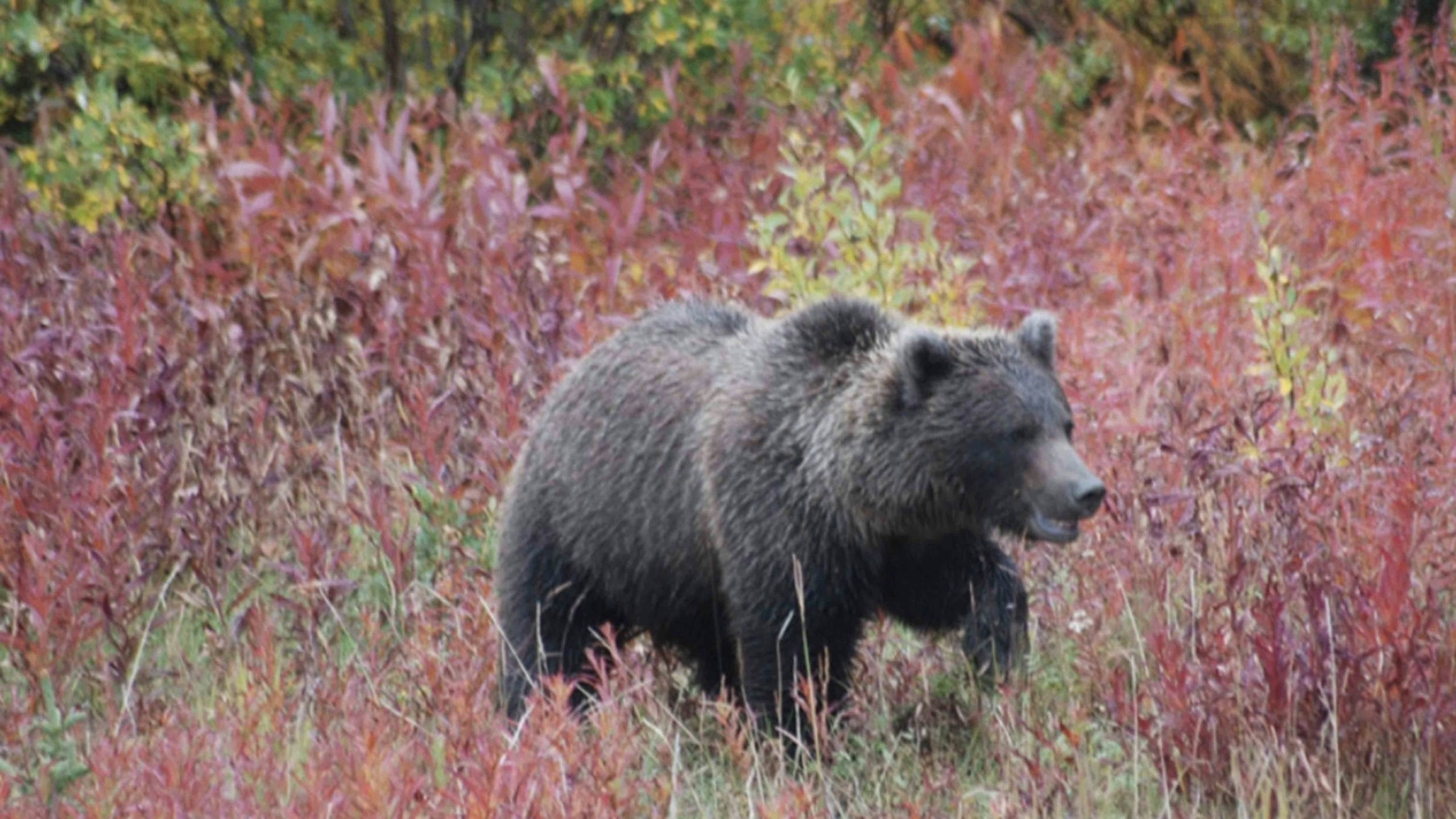The livestock industry has been at war with native wildlife, Cat Urbigkit’s weak protestations to the contrary notwithstanding, for 150 years.
At Western Watersheds Project we stand by our characterization of the livestock industry’s war on wildlife, and this description is hardly unique, as the phrase is common use. And for good reason. The livestock industry is now in its third century (19th, 20th, and now 21st) of killing off wildlife, without interruption.
By characterizing this framing as a “lie,” is Urbigkit suggesting that these wildlife-exterminating campaigns should really be described as a 150-year-long skirmish instead?
No, this is a full-fledged war, replete with land mines (M-44 cyanide bombs), snipers, night-vision goggles, and aerial attacks. When the livestock industry uses slogans like “smoke a pack a day,” referring to a pack of wolves, it’s a declaration of war. And when they advise “shoot, shovel, and shut up,” they are explicitly endorsing illegal killings (otherwise, why would they need to shovel and shut up?).
There is a fundamental difference in messaging approach between Western Watersheds Project and Cat Urbigkit, and it’s this: We tell it like it is, while Urbigkit (and the livestock industry generally) prefer to exaggerate, obfuscate, and distract to in an attempt to hide uncomfortable truths. In Urbigkit’s essay, for example, lamb deaths are “kills” if eagles prey on them, but when she calls Wildlife Services, it’s to “initiate control.”
Elsewhere in the press, so-called “problem” grizzly bears are “euthanized” (even though they aren’t suffering in the least), and wolves are “harvested” by hunters who never planted any wolf seeds. When George Orwell wrote the novel 1984, he foresaw a “NewSpeak” in which a malign government used misleading language to hide their intent. Today’s cynical word-bending by Urbigkit and others is exactly what he foretold in his dystopian fictional future.
Turning back to the century-and-a-half war on wildlife, the ranchers did the lion’s share of the dirty work themselves during the 1800s. They also urged local governments to place bounties to incentivize the killing of large native carnivores, a process later abandoned as barbaric, but revived by an anti-predator activist group dishonestly calling itself the “Foundation for Wildlife Management.” (No self-respecting wildlife manager would count bounties and indiscriminate killing as “wildlife management”).
It wasn’t until 1915 that Congress started the predator killing spree. The Animal Damage Control Act passed in 1931, with livestock enshrined as the central justification of federal wildlife killing. This led to the USDA Animal Damage Control bureau, cynically renamed ‘Wildlife Services’ (the services most frequently provided to wildlife are death and maiming), and the livestock industry gained its own federally-funded death squad.
And it’s not just wolves and grizzly bears that the ranchers want to drive extinct (and keep extinct, which they have successfully done across 85% of Wyoming). They’re after coyotes and prairie dogs, wiping out beavers and blocking the recovery of bison.
If it weren’t for the Bald and Golden Eagle Protection Act, adopted to curb the bloodthirsty livestock industry, eagles would be a thing of the past. But, as Urbigkit reminds us, ranchers still call in the assassins on bald and golden eagles when their flocks are subject to predation.
All this killing is based in dominionism, an ecologically toxic philosophy that the Earth and its community of life were put here for humanity’s exclusive use and benefit, requiring human oversight and management.
As a wildlife biologist, it is incumbent on me to admit that my own profession, wildlife management, is infected by the philosophy of dominionism, which it baked right into the North American Model of Wildlife Management and considered foundational to training of budding wildlife biologists.
I got this training myself, but, also trained as a critical thinker, was able to discern that humanity’s dominion over the beasts of the field and the birds of the air is based not in scientific hypothesis testing, but is instead derived from Judeo-Christian religious texts. Wildlife managers, the livestock industry, and American society as a whole would do well to put this antiquated and ecologically counterproductive philosophy behind us.
For millennia, Indigenous peoples inhabited the continent, most prevalently pursuing a subsistence lifestyle of hunting and gathering, or sometimes small-scale farming, and cultivated a much different relationship with nature.
They coexisted successfully with an abundance and diversity of wildlife that no American alive has ever experienced. When Lewis and Clark undertook their western exploration, there were 380,000 wolves in the western United States and Mexico and 20,000 grizzly bears, coexisting with 60 million bison, 10 million elk, 35 million pronghorn, 13 million blacktail and mule deer, and 2 to 7 million wild horses.
Ranchers (and other early settlers) killed and displaced them, and took over. Today there are perhaps 7,000 wolves (if problematic state estimates are to be believed), 2,000 grizzlies, 1 million elk, 1 million pronghorn, 3.8 million blacktail and mule deer, and 67,000 wild horses (prior to the recent hard winter).
In her column, Urbigkit chronicles alleged predation on domestic lambs. It’s “alleged,” because nowhere does she say that anybody actually saw the bald eagles kill the lambs; they might have died of other causes and simply been scavenged by eagles.
Let’s be clear, ranchers should never be allowed to call in death squads to target bald and golden eagles. If their flocks and herds could feed (and help restore) the eagle population, and coexist with wild bison, they could properly claim some patriotic credit, instead of self-identifying as enemies of our national symbols.
If eagles, or any other predators, are causing problems for Urbigkit’s ranching operation, how about taking some responsibility for the security of the herd, and have lambing occur inside lambing sheds? If predation is such a serious risk, then this would seem like a reasonable precaution.
In the end, Urbigkit isn’t entitled to control any writer’s choice of words as descriptors. My job is to tell the cold, hard, unvarnished truth, and shine a light on the lack of respect for the land – and native wildlife – all too often displayed by the commercial users of public lands. I don’t sugarcoat the livestock industry’s maltreatment of native wildlife. If they can’t take the criticism, ranchers (and and Urbigkit in particular) can change their ways.
Certainly not all ranchers kill wolves or coyotes, but there are bad actors (Urbigkit among them) who stubbornly refuse to stop killing predators. I look forward to a day when the ranching community starts policing their own, not to silence those who own up to the harmful consequences of overgrazing and wildlife-killing, but to compel the sloppier operators in their number to clean up their act and coexist with the natural world.
Sincerely,
Erik Molvar
Erik Molvar is a wildlife biologist and Executive Director of Western Watersheds Project, a conservation nonprofit dedicated to protecting and restoring wildlife and watersheds across the American West.





